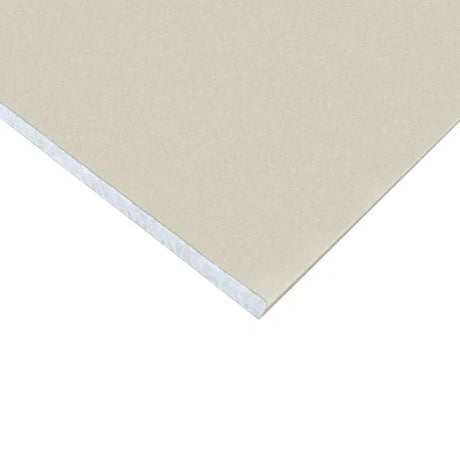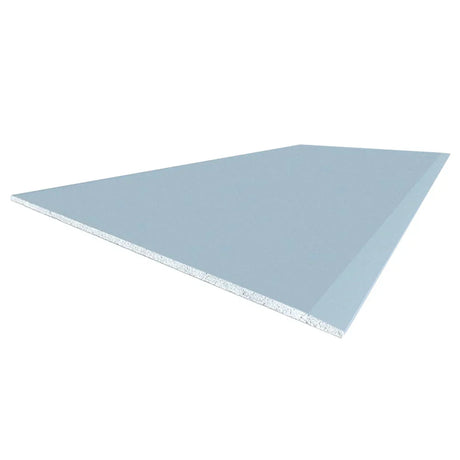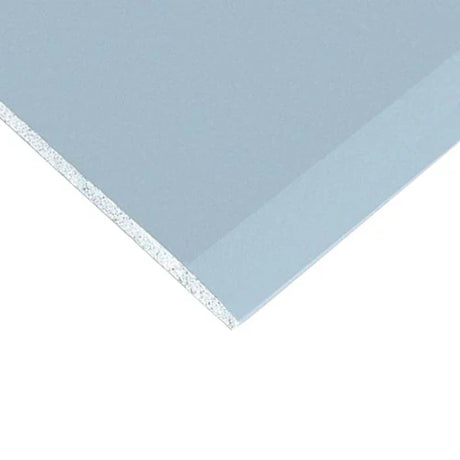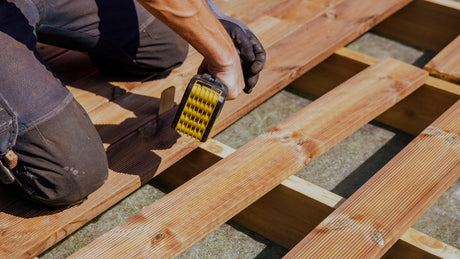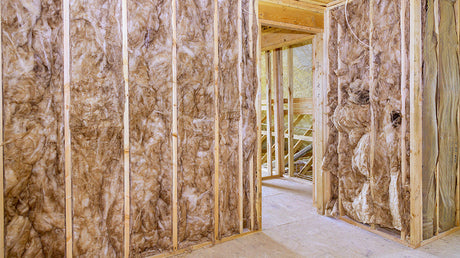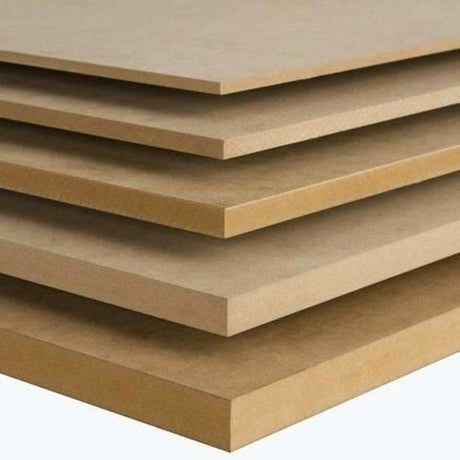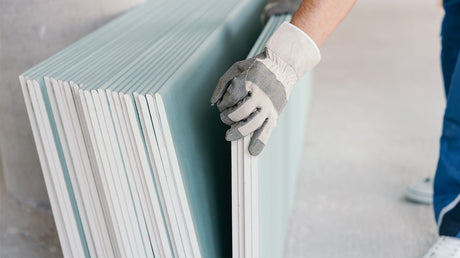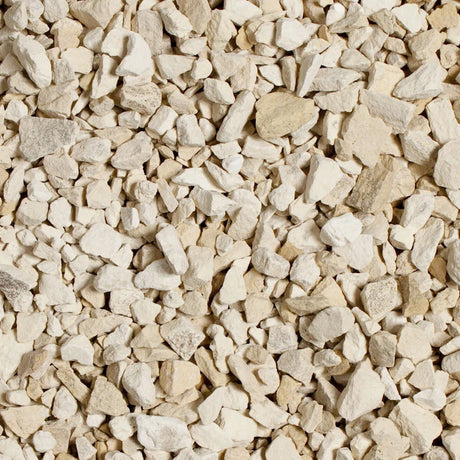MDF (Medium Density Fibreboard) skirting boards and architraves offer several distinct advantages compared to solid wood alternatives, making them increasingly popular for both residential and commercial applications. Understanding these benefits helps inform appropriate material selection based on specific project requirements beyond simple price considerations.
The dimensional stability of MDF represents perhaps its most significant technical advantage over solid wood options. Unlike natural timber that expands and contracts with seasonal humidity variations, MDF maintains consistent dimensions throughout the year due to its manufactured composition with fibres oriented in multiple directions rather than along a single grain. This stability virtually eliminates the warping, twisting, and splitting commonly associated with solid wood trims regardless of quality or seasoning. Testing by the Building Research Establishment indicates that MDF typically exhibits dimensional movement of less than 0.3% with humidity changes between 30-80%, compared to 2-4% for pine and 1-2% for hardwoods under identical conditions. This stability proves particularly valuable in modern central-heated properties where significant seasonal humidity fluctuations potentially cause substantial movement in solid wood alternatives despite quality materials and proper installation, resulting in unsightly gaps at joints, split corners, or warped sections requiring premature replacement despite proper initial fitting.
The surface consistency of MDF creates excellent foundations for painted finishes beyond simple stability advantages. The absence of grain patterns, knots, or other natural timber features provides uniform surfaces accepting paint with consistent absorption rates. This uniformity eliminates the grain raise, bleed-through, or differential absorption commonly experienced with natural timber potentially requiring additional sealing or preparation steps despite quality materials. Leading UK manufacturers including Caledonian Plywood, Cheshire Mouldings, and Richard Burbidge produce MDF skirting with exceptional surface quality specifically engineered for premium painted finishes. The completely consistent texture creates ideal painting surfaces compared to even premium hardwoods potentially displaying subtle grain variations inevitably visible through painted finishes regardless of preparation quality or paint specification, making MDF particularly valuable for contemporary interiors where flawless painted surfaces take priority over visible natural timber characteristics despite potential preference for natural materials in different aesthetic contexts.
The profile consistency achieved through MDF manufacturing creates significant advantages over machined solid timber, particularly for complex decorative profiles beyond simple rectangular sections. The manufactured sheet material allows precise CNC machining maintaining exact profile dimensions throughout production runs, compared to solid timber potentially displaying minor variations due to density differences within natural materials despite quality machining. Suppliers like Howdens, Jewson, and Travis Perkins stock extensive MDF profile ranges with exceptional consistency impossible to achieve through solid timber manufacturing without substantial price premiums. This manufacturing precision proves particularly valuable for large projects requiring matching profiles throughout multiple production batches, ensuring perfect alignment at corners and joints without the minor variations potentially occurring between different solid timber machining runs despite quality control attempts inevitably challenged by natural material variations beyond manufacturing control.
The environmental credentials of modern MDF deserve consideration within contemporary sustainability frameworks beyond traditional natural material assumptions. Quality MDF from responsible UK manufacturers including Medite, Kronospan, and Egger utilises timber from certified sustainable forestry operations, with approximately 25-30% higher material yield compared to solid timber production generating substantial waste through cutting patterns necessarily discarding significant proportions of harvested trees despite efficient sawmilling operations. Leading manufacturers increasingly incorporate recycled wood content (typically 15-25%) within MDF production, while manufacturing processes require approximately 30% less energy compared to preparing equivalent solid timber products despite superficially similar appearance. These efficiency factors create potential carbon footprint reductions of 15-20% compared to solid timber alternatives when assessed through comprehensive lifecycle analysis, despite natural material assumptions potentially suggesting opposite conclusions without detailed environmental impact assessment beyond simple "natural versus manufactured" classifications potentially overlooking significant efficiency advantages in resource utilisation despite artificial composition perception potentially creating negative environmental assumptions without factual foundation.
The cost advantage of MDF creates compelling economic benefits without proportionate performance compromise compared to solid timber alternatives. Standard MDF skirting typically costs 40-60% less than equivalent pine profiles and 70-80% less than hardwood alternatives such as oak or maple. For typical residential projects requiring 30-40 linear metres of skirting, these differences represent substantial savings potentially reducing installation costs by £150-250 compared to pine or £300-450 compared to hardwood without compromising aesthetic appearance or practical performance in standard painted applications. This economic advantage explains MDF's growing market dominance beyond simple price sensitivity, delivering comparable or superior performance for painted applications despite significant cost reductions unavailable through alternative material selections maintaining equivalent performance characteristics.
The consistency between production batches offers practical advantages beyond technical performance specifications. Unlike timber potentially varying between harvesting locations or seasonal growth patterns, MDF maintains identical composition and performance characteristics across all production batches meeting the same specification standards. This consistency proves particularly valuable for phased renovation projects potentially requiring additional materials months or years after initial installation, as replacement sections match original installations without the colour, grain, or density variations inevitable with natural timber potentially creating visible differences despite identical profile selection and finishing processes. UK suppliers including Arnold Laver, International Timber, and James Latham provide consistent MDF specifications throughout their distribution networks, ensuring replacement availability with identical performance characteristics potentially unavailable through solid timber alternatives subject to natural variation despite equivalent quality classification.
The workability of MDF creates significant practical advantages during installation beyond material characteristics alone. The consistent density without grain direction allows clean cutting without splintering or breakout, while permitting fixing without splitting even near board edges where solid timber frequently requires pre-drilling despite careful installation technique. Contemporary MDF from quality manufacturers accepts both adhesive and mechanical fixing systems without material failure concerns potentially limiting installation options with natural timber particularly when working near board edges or employing substantial fixing quantities potentially splitting natural materials despite proper installation techniques. These practical advantages significantly reduce installation time (typically 15-25% compared to solid timber), creating additional economic benefits beyond material cost savings potentially justifying MDF selection on installation efficiency alone despite potential preference for natural materials requiring more time-intensive installation techniques.
The performance limitations of MDF deserve honest acknowledgment alongside its advantages, ensuring appropriate application within suitable environments rather than universal recommendation regardless of conditions. The material's vulnerability to water damage makes standard MDF unsuitable for exterior applications or areas with direct water exposure, though moisture-resistant variants provide enhanced performance in humid environments like bathrooms or kitchens despite remaining inappropriate for exterior use regardless of finishing quality. The material density creates weight approximately 15-20% greater than pine of identical dimensions, requiring appropriate fixing consideration for secure installation. These limitations explain why professional specification frequently employs different materials for specific challenging applications despite MDF advantages for standard interior installations, selecting appropriate materials for particular environmental challenges rather than applying universal specifications regardless of application-specific requirements potentially creating premature failure despite quality installation if material selection fundamentally mismatches specific environmental challenges despite proper fitting technique.
At DIY Building Supplies, we stock comprehensive ranges of both MDF and solid timber skirting and architraves, ensuring appropriate options regardless of your specific project requirements or material preferences. Our experienced advisors provide practical guidance on suitable selections based on your particular application, helping identify optimal materials balancing performance requirements, aesthetic preferences, and budget considerations appropriate to specific installation environments and design objectives.


